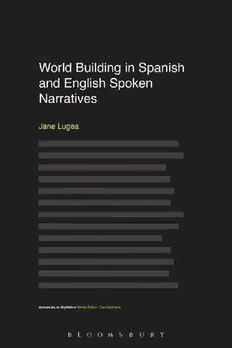
World Building in Spanish and English Spoken Narratives PDF
238 Pages·2016·3.569 MB·English
Most books are stored in the elastic cloud where traffic is expensive. For this reason, we have a limit on daily download.
Preview World Building in Spanish and English Spoken Narratives
Description:
Text World Theory is a powerful framework for discourse analysis that, thus far, has only been used in monolingual Anglophone stylistic analyses. This work adapts Text World Theory for the analysis of Spanish discourse, and in doing so suggests some improvements to the way in which it deals with discourse - in particular, with direct speech and conditional expressions. Furthermore, it applies Text World Theory in a novel way, searching not for style in language, but for the style of a language.Focusing principally on deixis and modality, the author examines whether Spanish speakers and English speakers construct the narrative text-world in any patterned ways. To do so, the ‘frog story’ methodology is employed, eliciting spoken narratives from native adult speakers of both languages by means of a children’s picture book. These narratives are transcribed and subjected to a qualitative text-world analysis, which is supported with a quantitative corpus analysis. The results reveal contrasts in Spanish and English speakers’ use of modality and deixis in building the same narrative text-world, and are relevant to scholars working in language typology, cross-cultural pragmatics and translation studies. These novel applications of the Text World Theory push the boundaries of stylistics in new directions, broadening the focus from monolingual texts to languages at large.
See more
The list of books you might like
Most books are stored in the elastic cloud where traffic is expensive. For this reason, we have a limit on daily download.
